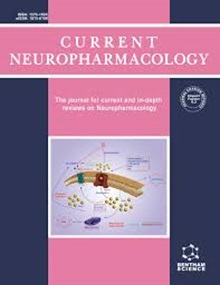Exploring the Confluence of Animal Medicine and its Implications for Human Health: A Systematic Literature Review
IF 5.3
2区 医学
Q1 NEUROSCIENCES
引用次数: 0
Abstract
Introduction: The abuse of veterinary drugs has emerged as a concerning trend, with global fatalities on the rise. Our understanding of this phenomenon remains limited. This study aims to identify the veterinary drugs being misused, the reasons behind their misuse, and how they are obtained. Methods: Utilising PubMed, Scopus, and Web of Science databases, along with related grey literature, we applied the Preferred Reporting Items for Systematic Reviews and Meta-analyses (PRISMA) framework for data collection. Screening and cross-referencing yielded 66 relevant articles, encompassing case reports, surveys, reports, and systemic literature reviews. The analysis identified 28 distinct veterinary drugs being misused in humans, primarily falling into categories, e.g., α-2- and β-2-adrenergic receptor agonists, GABAergic receptor modulators, opioid receptor agonists, nonsteroidal anti-inflammatory drugs (NSAIDs), and N-methyl-D-aspartate (NMDA) receptor antagonists. These drugs were used for various purposes, including recreational use, weight loss, bodybuilding, pain relief, and self-medication for stress-related symptoms. Results: Routes of administration predominantly included parenteral, oral, and inhalation methods. Veterinary workers/assistants and individuals connected to animals were identified as contributors to the misuse of these medications. Motivations for their utilisation ranged from affordability and accessibility to the ease of obtaining multiple prescriptions from various veterinary sources, often in conjunction with other illicit substances. Dependence and addiction were common outcomes of the misuse of veterinary medicines by humans. Conclusion: Overall, this systematic review underscores the increasing popularity of veterinary prescription drug misuse despite being under-reported with limited available data. Healthcare professionals are urged to remain vigilant to potential overdose events involving these medications.探索动物医学的融合及其对人类健康的影响:系统文献综述
导言:兽药滥用已成为一种令人担忧的趋势,全球死亡人数不断上升。我们对这一现象的了解仍然有限。本研究旨在确定被滥用的兽药、滥用背后的原因以及获取方式。研究方法:我们利用 PubMed、Scopus 和 Web of Science 数据库以及相关灰色文献,采用系统综述和元分析首选报告项目 (PRISMA) 框架进行数据收集。通过筛选和交叉引用,我们获得了 66 篇相关文章,其中包括病例报告、调查、报告和系统文献综述。分析发现有28种不同的兽药被人类滥用,主要分为α-2-和β-2-肾上腺素能受体激动剂、GABA能受体调节剂、阿片受体激动剂、非甾体类抗炎药(NSAID)和N-甲基-D-天冬氨酸(NMDA)受体拮抗剂等类别。这些药物的使用目的各不相同,包括娱乐、减肥、健美、止痛和针对压力相关症状的自我治疗。研究结果给药途径主要包括肠外、口服和吸入法。兽医工作者/助手以及与动物有关的个人被认为是滥用这些药物的诱因。滥用这些药物的动机多种多样,有的是为了负担得起,有的是为了方便获取,也有的是为了方便从各种兽医渠道获得多个处方,而且往往与其他非法药物一起使用。依赖性和成瘾性是人类滥用兽药的常见后果。结论:总体而言,本系统综述强调了兽医处方药滥用现象日益普遍,尽管报告不足且可用数据有限。我们敦促医疗保健专业人员对涉及这些药物的潜在用药过量事件保持警惕。
本文章由计算机程序翻译,如有差异,请以英文原文为准。
求助全文
约1分钟内获得全文
求助全文
来源期刊

Current Neuropharmacology
医学-神经科学
CiteScore
8.70
自引率
1.90%
发文量
369
审稿时长
>12 weeks
期刊介绍:
Current Neuropharmacology aims to provide current, comprehensive/mini reviews and guest edited issues of all areas of neuropharmacology and related matters of neuroscience. The reviews cover the fields of molecular, cellular, and systems/behavioural aspects of neuropharmacology and neuroscience.
The journal serves as a comprehensive, multidisciplinary expert forum for neuropharmacologists and neuroscientists.
 求助内容:
求助内容: 应助结果提醒方式:
应助结果提醒方式:


